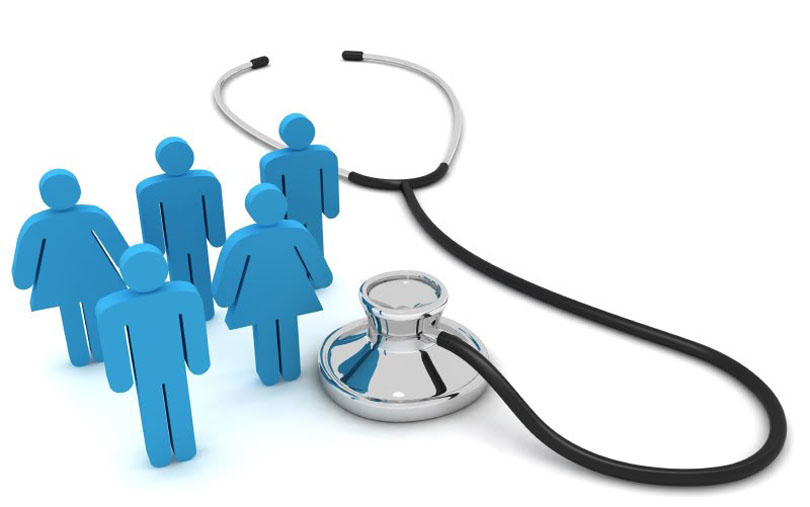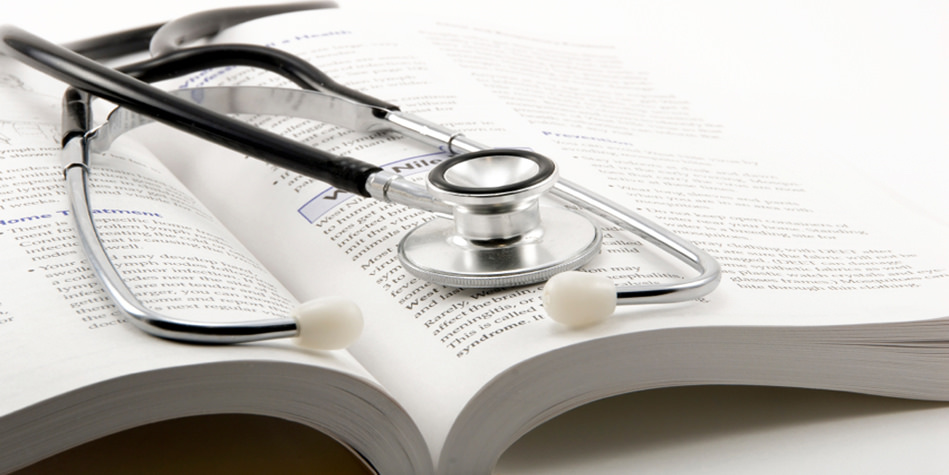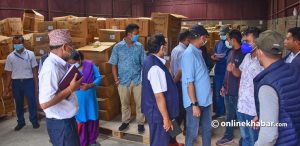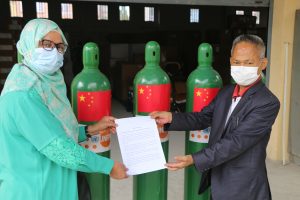Healthcare workers are positioned at a high-risk exposure to the Covid-19. We need them to combat the infection.

Worldwide, millions of people stay at home to minimise transmissions of severe acute respiratory syndrome coronavirus-2, but healthcare workers (HCWs) prepare to do the exact opposite.
The HCWs will go to clinics, hospitals, and other high-risk environments and are more prone of becoming the victim of Covid-19. We have heard and watched some horrific stories of thousands of HCWs already falling ill and dying at different parts of the world during the ongoing pandemic crisis. We need to understand and implement what hospitals can do to lower the rate of infection among HCWs as this pandemic accelerates.
The success of lower infection among the HCWs not just comes from the availability of personal protective equipment (PPE), but also from the high level of exactitude with which hospital infection control measures are applied. There is an imperative need to safeguard our HCWs who are core for fighting the crisis.
The global healthcare system is already operating at more than maximum capacity for many months. But, the HCWs, unlike life-saving ventilators, cannot be urgently manufactured or run at full occupancy in the long run. Thus, it is important that governments and health departments place appropriate strategies to minimise infections among the HCWs.
The following key principles should be followed for that:
- Minimising the movement and restricting unwanted visitors
- Appropriate use of PPEs strategically tailored for different levels of exposure risk
- Comprehensive patient, staff and visitor screening at the entry point
It is believed the effective measures and principles behind this can help minimise infections among the HCWs and we can combat the spread of the coronavirus.
Minimising the movement and restrict unwanted visitors

How does the virus move within a hospital?
There are different ports of entry of the virus within a hospital. Categorically, they can be classified as low risk, moderate risk, and high risk.
Non-patient care areas, ambulatory care areas and medical wards with asymptomatic non-Covid-19 patients are classified as low-risk exposure to the virus.
Screening and triage clinics, the medical ward where clinically stable suspected or confirmed Covid-19 patients who do not require high medical intervention such as intubation, scope or any other procedures that may aerosolise viral particles may constitute the moderate risks. The HCWs can assume exposure to the virus primarily via droplet particles but less likely by air.
The intensive care unit (ICU), high dependency unit (HDU), acute care unit (ACU), and procedure rooms for severely ill and confirmed Covid-19 patients are the high-risk areas. The HCWs can assume working in these areas are more susceptible to infection.
Below are the three key aspects of infection control the hospitals need to address in order to protect their HCWs:
- What policies and processes are in place to minimise the infection risk within and between different departments of the hospitals?
- What kinds of PPEs are needed to protect the HCWs in different exposure departments?
- How can the HCWs be screened and monitored for the Covid-19?
How to place policies and processes in place to minimise infection risk within and between different departments of the hospitals?
LOW RISK
- Prevent contamination at entry and exit
It is extremely important to screen at all entry and exit points of any hospital. The patients and staff who are asymptomatic and have no history of close contact with suspected or confirmed cases might enter the hospital and proceed to low-risk zones along dedicated routes that avoid travelling through moderate and high-risk zones. But, they also must be screened with questionnaires and body temperature monitoring. The screening questions may include:
- Any travel history in the last two months
- Any flulike symptoms or sore throat
- Any temperature in last week
- Any close contact with suspected or confirmed Covid-19 patient
The suspected Covid-19 cases then should be directed away from low-risk zones into separate areas of the hospital. Clear signs and physical barriers help to reduce unnecessary traffic that may facilitate the spread of the virus.
- Categorise urgent and non-urgent care of patients at the hospital
It is important for health departments to differentiate the categories of surgeries. Differentiating into four categories from urgent to non-urgent is very effective during a pandemic crisis:
Category 1:Procedures that are clinically indicated within 30 days
Category 2: Procedures that are clinically indicated within 90 days
Category 3: Procedures that are clinically indicated within 365 days
Category 4: Procedure that are clinically indicated after 365 days
Routine care should be conducted remotely through phone or video or at screening areas physically away from the hospital environment.
- Implement social distancing and risk-mitigating in ambulatory care, emergency department and different departments of the hospitals
The risk of asymptomatic transmission should equally be considered seriously. Social distancing measures such as distance keeping, isolating areas, and installing droplet precaution around all the departments of hospitals should be effectively placed and monitored.
MODERATE RISK
- Prevent the spread of the virus on fomites such as PPE and clothing
The HCWs are venerable and posses a greater risk of transmitting the virus to each other via fomites. The hospitals should minimise this risk by setting up clearly marked, designated, access-controlled exits. Buffer zones should be set up at exits in which the HCWs can carefully doff PPE so that potentially contaminated PPE does not enter low- risk zones.
- Prevent the spread of the virus from infected patients during transport
Transporting infected patients from isolated areas possesses a risk of contaminating the environment and surrounding for the HCWs and other general public. Dedicated, clearly marked routes for transfers minimises the risk of contamination. Any person transferring a Covid-19 patient should be in the full PPE.
- Implement workflows to conserve PPE, reduce contamination and limit exposure
To conserve PPE and limit contamination from donning and doffing, the HCWs in moderate or high-risk areas should always remain in PPE during their entire shift. The shifts should be limited to four to six hours to limit fatigue. Telecommunication facilities should be installed in place to communicate with patients to avoid unnecessary exposure.
- Separate confirmed cases from each other
A confirmed Covid-19 case should be immediately separated from the general ward to a designated ward in order to minimise cross-contamination.
- Designate infection control specialists in the team
A designated infection control or a Covid-19 officer should oversee all the related cases. Their responsibility should also focus on monitoring and training for correct usage of PPE.
HIGH RISK
- Maintain highly trained staff in high-risk situations
A highly trained staff group is required to look after a complex patient. In order to maintain the flow of highly trained staff, the hospitals should implement up-skilling programmes with a proper education and training package.
- Limit community exposure
Dedicated HCWs should be staffed accordingly. While on duty, they should be typically housed in hospital accommodation and should be discouraged from interacting with community or non-Covid-19 patients. They are required to have negative Covid-19 PCR before returning to non-Covid-19 duties. A rotating cycle of two weeks on and one week off should be implemented to assist their health and wellbeing.
Appropriate use of PPE in different exposure risk areas

The highest priority of the government and healthcare organisations is to provide access to masks and other PPE requirements for the frontline HCWs.
General principles:
- Adopt standard precautions, including hand hygiene for all patients with respiratory infections. The patients and staff should observe cough etiquette and respiratory hygiene.
- Transmission-based precautions for patients suspected or confirmed Covid-19 cases:
- Contact and droplet precautions are recommended for routine care of patients.
- Contact and airborne precautions are recommended when performing aerosol-generating procedures (AGPs), including intubation and bronchoscopy.
The highest standards of PPE should be in place for the HCWs caring for Covid-19 patients. This is a highly transmissible disease so the PPE is required not only to protect the HCWs but also for our broader community. The PPEs should be applied based on the levels of exposure risk.
LOW RISK
Not everybody walking around a hospital is required to wear PPE. Masks are more effective when worn by potentially infected individuals to prevent the risk of transmission.
MODERATE RISK
The risk of transmission from the Covid-19 patients who do not require aerosol-generating procedures is classified to be largely from droplets from patient coughing and from fomites. The HCWs in a moderate risk zone should wear:
- Gown
- N95 respirator
- Goggles
- Gloves
The hospitals are also advised to supply full head-to-toe protective gears including surgical caps/hoods and shoe covers.
HIGH RISK
Extreme precautions should be in place in a high-risk zone. At this level, the presumed risk of transmission is airborne. The HCWs are required to cover their entire body to protect them from aerosol particles from contaminating any parts of the body.
- Long-sleeved gown
- P2/N95 respirator – should be fit – checked with each use (an air-tight seal may be difficult to achieve for people with facial hair. If it cannot be achieved, facial hair should be removed.)
- Face shield or goggles
- Disposable non-sterile gloves when in contact with patients (hand hygiene before donning and after removing gloves)
Comprehensive screening and monitoring of the workforce

Healthcare workers are at higher infection risk than the general public. Regular screening of the HCWs should be done to prevent the spread both within and from hospitals. Regular screening also allows infections to be caught early, which can reduce the spread and improve clinical outcomes. The hospitals need to introduce the following policies for screening their workers:
- Self-monitoring for symptoms
- Testing after high-risk encounters
- Self-isolation or quarantine for the HCWs who test positive
- A staff log for each ward or entry areas to allow monitoring of infection control and allow follow-up of contacts (if necessary)
The additional measures like the following will also help:
- Making sure the workplace is clean and hygienic, and everything is wiped with disinfectant regularly
- Prompt regular and thorough hand-washing by employees, contractors, and customers
- Display of posters prompting hand-washing
- Making sure that staff, contractors and customers have access to places where they can wash their hands with soap and water
- Prompt good respiratory hygiene in the workplace
- Briefing if the virus starts spreading in your local area or a community
The author is a Nepali healthcare worker based in Australia. Currently, he works as the Assistant Director of Nursing at St Vincent’s Private Hospital, Sydney.
























